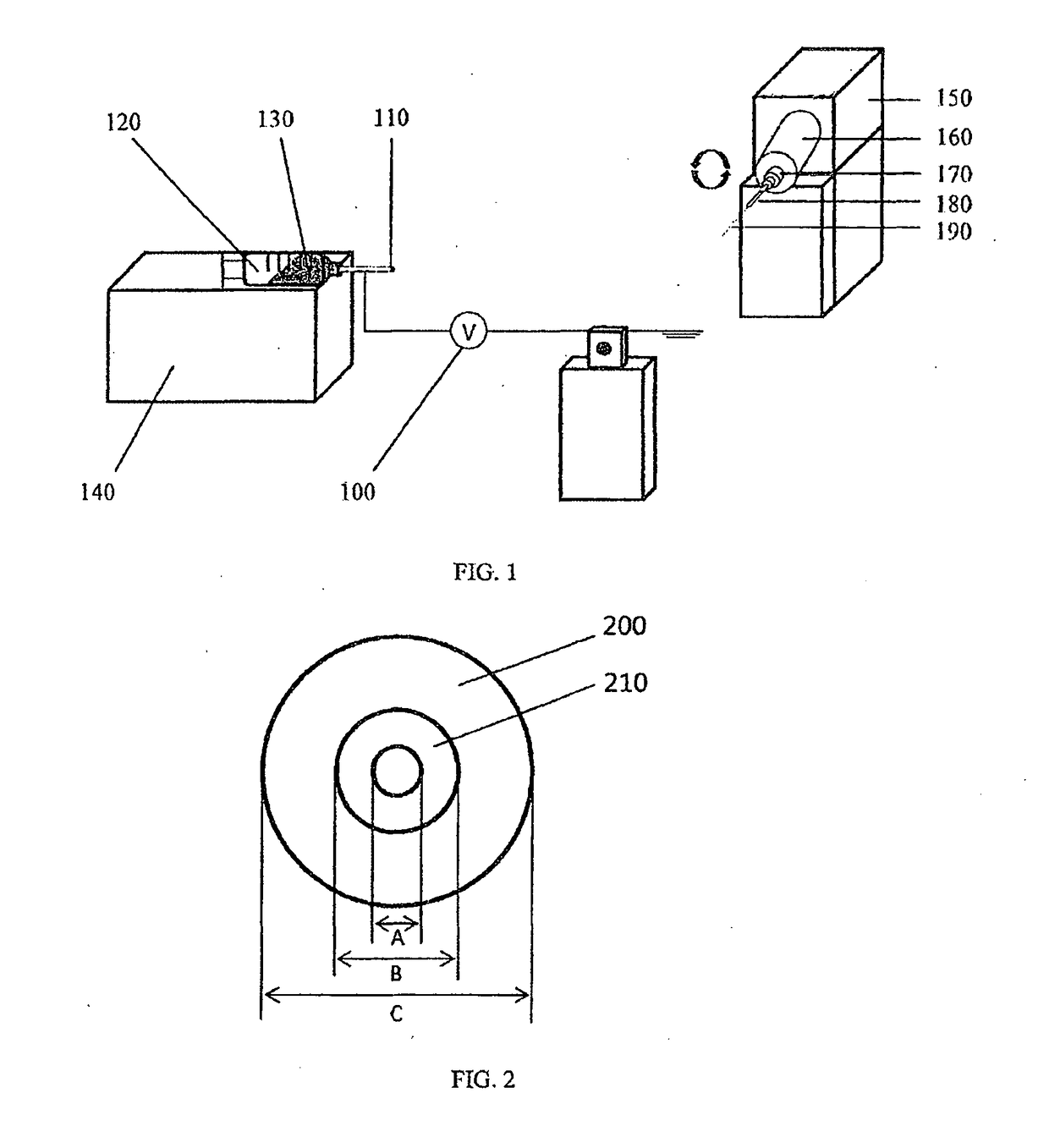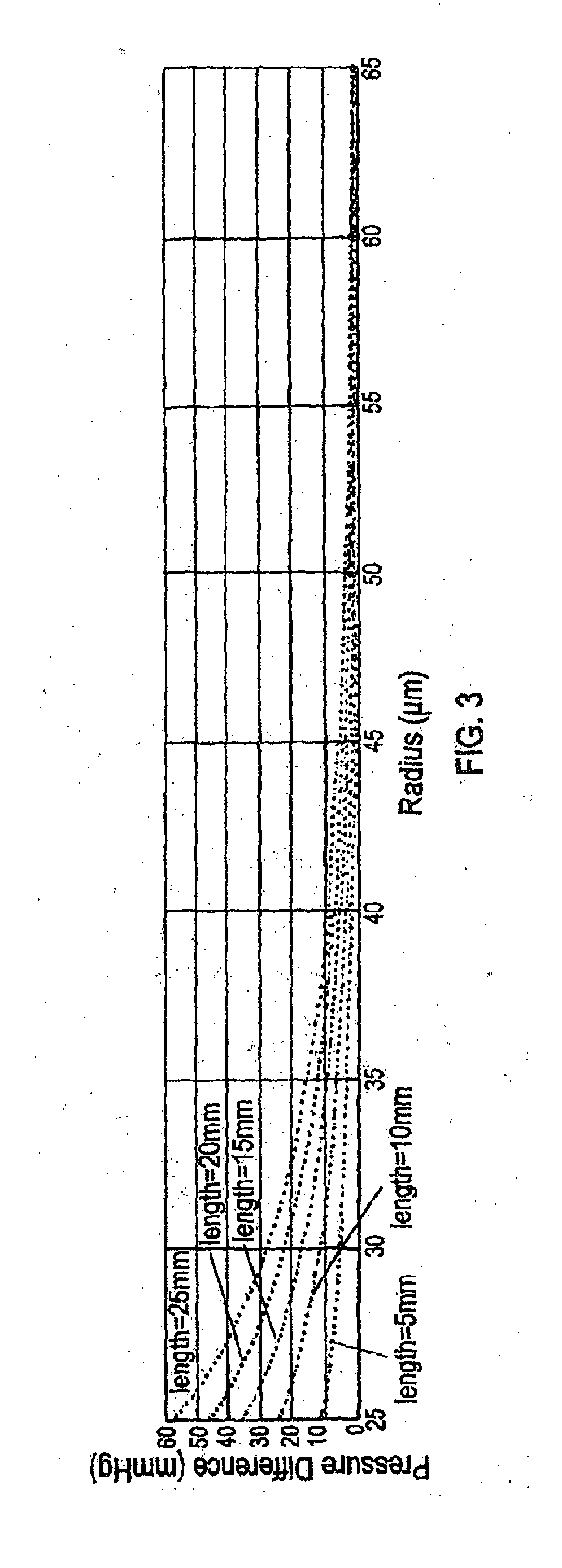Partially degradable stents for controlled reduction of intraocular pressure
a stent and stent technology, applied in the field of biodegradable stents, can solve the problems of devices in which the lumen diameter increases, and achieve the effects of reducing protein adsorption and in vivo inflammatory response, improving glideability, and improving the effect of elasticity
- Summary
- Abstract
- Description
- Claims
- Application Information
AI Technical Summary
Benefits of technology
Problems solved by technology
Method used
Image
Examples
example 1
inning to Generate Partially Bio-Degradable Stents (“Pressure Control Shunt”) and In Vitro Characterization of Degradation in an Aqueous Environment
[0136]Materials and Methods
[0137]Materials used to generate the tubular shaped stents were generally regarded as safe (GRAS) materials approved by the United States Food and Drug Administration (FDA).
[0138]Sequential Electrospinning
[0139]Biodegradable polyglycolide (PGA) was dissolved at 10 wt % in hexafluoroisopropanol (HFIP). Dissolved PGA was electrospun onto the surface of a template steel wire of 50 μm in diameter, followed by heating above the glass transition temperature of the polymer to improve its mechanical properties.
[0140]Next, non-degradable polyethylene terephthalate (PET) dissolved at 10 wt % in HFIP was sprayed on top of the PGA layer, forming the outer wall, which was also treated with heat afterwards.
[0141]Finally, the template wire was removed, leaving a hollow, tubular shaped stent made from PGA and PET.
[0142]Degrada...
example 2
tal Measurements and Mathematical Modeling of the Pressure Change of Flows Through Stents
[0151]Materials and Methods
[0152]PBS was flowed at different flow rates at room temperature over the period of one day through the stents made as described in Example 1, and the actual pressure change (i.e., pressure difference between inlet end and outlet end of the stent) of the fluid was measured. It was unlikely that core degradation was observed or it would affect the result of pressure change within the relatively short test period. The measured values were compared with the predicted pressure change according to the Hagen-Poiseuille (HP) equation.
[0153]Alternatively, the pressure changes related to a wide range of variables (e.g., lengths of stents, radii of stents, and flow rates of a fluid) were mathematically modeled.
[0154]Results
[0155]As shown in Table 2, the flow of PBS through these stents obeyed the HP equation.
TABLE 2Predicted and actual pressure change with flow of PBS atdifferen...
example 3
Coating of Stents to Prevent Leakage
[0159]Materials and Methods
[0160]Polyurethane was dissolved in glacial acetic acid at 0.2 wt %, and the solution was pipetted onto stents as a thin coating and then snap-frozen. The externally coated stents were examined under SEM.
[0161]Results
[0162]This coating appeared to make the tube impermeable and prevent leakage. It could also be loaded with agents to provide for drug delivery functionality. SEM confirmed the surface smoothness of polyurethane-coated stents was different from that of uncoated stents.
PUM
| Property | Measurement | Unit |
|---|---|---|
| time | aaaaa | aaaaa |
| time | aaaaa | aaaaa |
| diameter | aaaaa | aaaaa |
Abstract
Description
Claims
Application Information
 Login to View More
Login to View More - R&D
- Intellectual Property
- Life Sciences
- Materials
- Tech Scout
- Unparalleled Data Quality
- Higher Quality Content
- 60% Fewer Hallucinations
Browse by: Latest US Patents, China's latest patents, Technical Efficacy Thesaurus, Application Domain, Technology Topic, Popular Technical Reports.
© 2025 PatSnap. All rights reserved.Legal|Privacy policy|Modern Slavery Act Transparency Statement|Sitemap|About US| Contact US: help@patsnap.com



